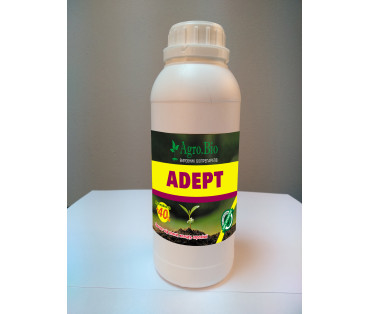Humic acids. Analytical study of humic acids
Humic acids (HA) -are the mixture of weak organic acids of aliphatic and aromatic series, which are insoluble in water, in a neutral and acidic medium, but are soluble in alkaline solutions. HA consist of that fraction of humic substances, which precipitates from alkaline aqueous solutions at lowering of pH below 2. HA are considered as flexible linear polymers with transverse bonds that exist in the form of random conglobulations. On average, 35% of the mass of the HA is represented by aromatic radicals, while the rest is in the form of aliphatic chains. The HA molecular mass is in the range of 10,000 to 100,000D. HAs easily form salts with inorganic trace elements. The analysis of extracts obtained from natural HAs has shown the presence of more than 60 different trace elements localized in forms that can be used by different plant and living organisms.
The analytical study of humic acids has a history of more than 200 years, but the most important issues of their origin and structure have not been resolved so far. The fact is that the synthesis of high-molecular organic compounds in living organisms is carried out using the genetic code and leads to structures that can be identified as a connection to the transactor. Synthesis of humic acids takes place through the natural selection of structures capable of obtaining stability in the rootable soil layers and to create the necessary ecological conditions for the growth and development of plants and soil biota. The most important role in optimizing the HA structure has a microorganisms feedback. The complexity and multifactorial nature of the mechanisms of the formation of humic acids leads to the diversity and high polydispersity of molecular structures. Therefore, all attempts to present a structural formula of humic acid (for example, the structure in Fig. 2) allow us to speak only about more or less successful models.
More complete information on the fragmentary composition of humic acids can be obtained using NMR spectroscopy data 13C. The most interesting in this area are prof. G.A. Kalabine [2] works. G.A. Kalabin together with us performed a comparative analysis of humic acids isolated from leonardite that allowed us to justify the selection of the field for the production of top of the line humates. The data presented in Table 2 demonstrate that humic acids from this field are most saturated with oxygen containing functional groups that determine the biological activity of humates (cetones, carboxyls, quinones, phenolic hydroxyls and esters).
Table 2
Comparative analysis of structural parameters of humic acids made of leonardite
|
The source of humid acids |
Distribution C according to different functional groups, % |
|||
C = OCetones |
СООНCarboxyls and quinones |
Сap- O Phenols and esters of the aromatic nucleus |
Сал -O Simple ether of aliphatic chains |
|
|
Cherkasy field |
1.6 |
7.2 |
4.0 |
17.7 |
|
Olexandria |
4.1 |
11.9 |
14.1 |
1.5 |
|
Tunkin |
8.2 |
9.8 |
15.3 |
6.3 |
Related Products
Atlant «Agro.Bio»
Due to the combination of manganese and zinc salts, as well as physiologically active components of organic origin (potassium humate Agro.Bio and organic compounds), as well as phytoharmonic substance..
$13.00
Adept «Agro.Bio»
Product Adept "Agro.Bio" is an innovative solution in agriculture to support the growth and development of plants. A biostimulant based on ginseng root micromycete fungi provides a wide range of effec..
$13.00
Related Articles
What contributes to the accumulation of nitrates in plants? Danger to plants.
Why do nitrates accumulate in plants?The accumulation of nitrates in plants is associated with great problems in their use.It is in the form of nitrates that plants absorb most of the nitrogen from th..
Stimulating effect of humic acid, potassium humate, Amino Energy on plant growth and the nature of this phenomenon
Many scientists pointed out the stimulating effect of humic acids: Nefedov, Bottomley, A. V. Blagoveshchensky and A. A. Prozorovskaya, N. A. Krasilnikov, Liske, Olson, Niklevsky and Voitsekhovsky, Kut..
Nutrition of Higher Plants by Organic and Synthetic Compounds and Micronutrients
Plant nutrition is a fundamental issue in agriculture, so clarifying the specifics of what plants consume is one of the most important tasks of agricultural biological science. ..





